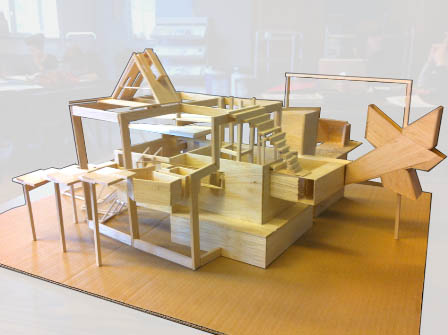The Unheimliche Approach in the Making of Interiors
DOI:
https://doi.org/10.7577/formakademisk.553Keywords:
unheimliche, anguish, interior architecture, emerging, (re)creativeAbstract
‘The (Re)Creative Workings of Existential Anguish in Interior Architecture’ aims to understand, and potentially incorporate, the unheimliche into interior-architectural design teaching. My inquiry addresses a paradoxical and disquieting force inside interiors that does not intimidate, but rather stimulates, the growth of imagination and creativity through design. How can one define the limits of one’s own certainties and how to overcome them even if they cause existential anguish? I will argue that existential anguish in interiors emerges in the tension between a particular belonging to existing affiliations and the fresh unfamiliarity of unexpected encounters. My inquiry complements prevailing values and norms in interior architecture as preset by society (identity, commodities, light, sight, and so on). Interior-architectural unheimlichkeit may engage in a disruptive design approach that triggers and allows the growth of other values, such as empathy, in interior architecture. The unheimliche may specify a small yet existential part of interior architecture as a discipline. How can existential anguish become a (re)creative agency in design teaching? It can be argued that a series of pedagogic experiments entitled ‘Onheimelijk Studios’, as collectively organized with and by student co-researchers at the St Lucas School of Architecture, Belgium, contributes to the research of existential anguish through the designing and making of interiors.

Downloads
Published
How to Cite
Issue
Section
License
Authors who publish with this journal agree to the following terms:
- Authors retain copyright and grant the journal right of first publication with the work simultaneously licensed under a Creative Commons Attribution 4.0 License that allows others to share the work with an acknowledgement of the work's authorship and initial publication in this journal.
- Authors are able to enter into separate, additional contractual arrangements for the non-exclusive distribution of the journal's published version of the work (e.g., post it to an institutional repository or publish it in a book), with an acknowledgement of its initial publication in this journal.
- Authors are permitted and encouraged to post their work online (e.g., in institutional repositories or on their website) prior to and during the submission process, as it can lead to productive exchanges, as well as earlier and greater citation of published work (See The Effect of Open Access).
- The author(s) must manage their economic reproduction rights to any third party.
- The journal makes no financial or other compensation for submissions, unless a separate agreement regarding this matter has been made with the author(s).
- The journal is obliged to archive the manuscript (including metadata) in its originally published digital form for at least a suitable amount of time in which the manuscript can be accessed via a long-term archive for digital material, such as in the Norwegian universities’ institutional archives within the framework of the NORA partnership.
The material will be published OpenAccess with a Creative Commons 4.0 License which allows anyone to read, share and adapt the content, even commercially under the licence terms:
This work needs to be appropriately attributed/credited, a link must be provided to the CC-BY 4.0 licence, and changes made need to be indicated in a reasonable manner, but not in any way that suggests that the licensor endorses you or your use.



